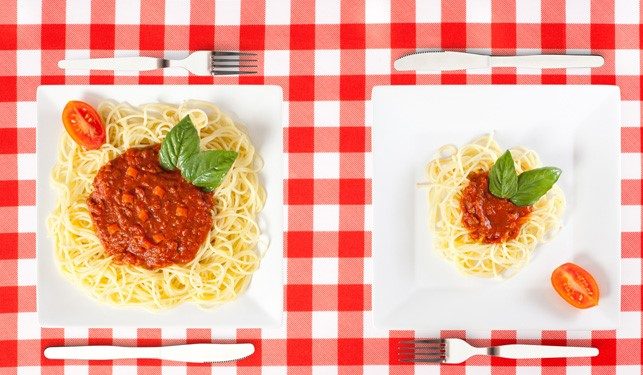
 Portion size: Have you found it difficult to calculate how much you should eat to satisfy your hunger and not overeat? Rujuta Diwekar tells the perfect way to calculate the proportion in which you should eat your meal.
Portion size: Have you found it difficult to calculate how much you should eat to satisfy your hunger and not overeat? Rujuta Diwekar tells the perfect way to calculate the proportion in which you should eat your meal.
We always say portion size is the key when it comes to weight management. But how much is too much? How do we draw the line between hunger and greed? For some of us, it may actually be difficult to stop eating when our hunger has been satisfied. Overeating and cravings are a result of not being able to decide how much food you need in a meal. Answering this mind-boggling question is nutritionist Rujuta Diwekar in one of her recent posts social media.
Portion size: How to calculate how much you should eat?
As part of the latest fitness project guideline, Diwekar talks about the proportion in which you should eat your meals. In her fitness project 2018, Diwekar recommended the Mental Meal Map for calculating how much you should eat in a meal.
Mental meal map
STEP 1: Visualise how much you would like to eat
STEP 2: Serve half the portion of the amount that you have visualised to eat in STEP 1.
STEP 3: Take double the time to eat the meal you served in STEP 2.
STEP 4: In case still hungry, start again from STEP 1.
3:2:1 proportion- the time-tested proportion of eating meals
This year, Diwekar shares something more accurate in terms of how much you should eat.
“A lot of us get constipated, have bad moods, loose skin and bad hair every time we are on a diet or try to get healthy. And the reason for that is we invariably try to eat lesser and in that process, land up doing more harm than good to the body. Eventually, we give up on the diet, go back to eating “normally” and then pile the weight back up. Then we go on one more diet, this time not just eating lesser but also removing something integral to our diet, rice, roti, breakfast, etc, – only to repeat that cycle again,” she writes in her post.
Eating food in a state of balance is the only way to stay fit in a more sustainable way, without depriving ourselves of the goodness of food.
3:2:1 is the time-tested proportion for eating your meals,” says Diwekar while adding that this proportion allows for maximum nutrients, enhances taste and even looks visually appealing to our eyes.
3:2:1 proportion means that you need to maintain a 3:2:1 ratio between grains, dal/sabzi and pickle/salad/curd.
- 50% of your plate should be rice or roti or millets (grains)
- 35% should be dal and sabzi (and meat if non-veg)
- 15% should be papad/ pickle/ salad/ curd, etc.
Following are the health benefits of eating food in this proportion:
- It appeals to all your senses, especially your eyes and taste.
- It is the one way to take control of your portion size without dieting and depriving yourself.
- Eating in such a time-tested proportion will benefit your digestion. You will begin to experience lesser acidity, bloating and constipation.
- The diverse combination of food helps in better assimilation of nutrients.
- At the end of the meal, you will feel satiated and not heavy and uncomfortable. Eating in this proportion can help you feel light and energetic.
Apart from this, you also need to make sure that there are no distractions when you have your meal. No TV, phone, laptop, book or newspaper should distract you when you are eating. This stands true for both kids and adults. Eating without any distractions helps you get in touch with your satiety signals and prevents overeating.







